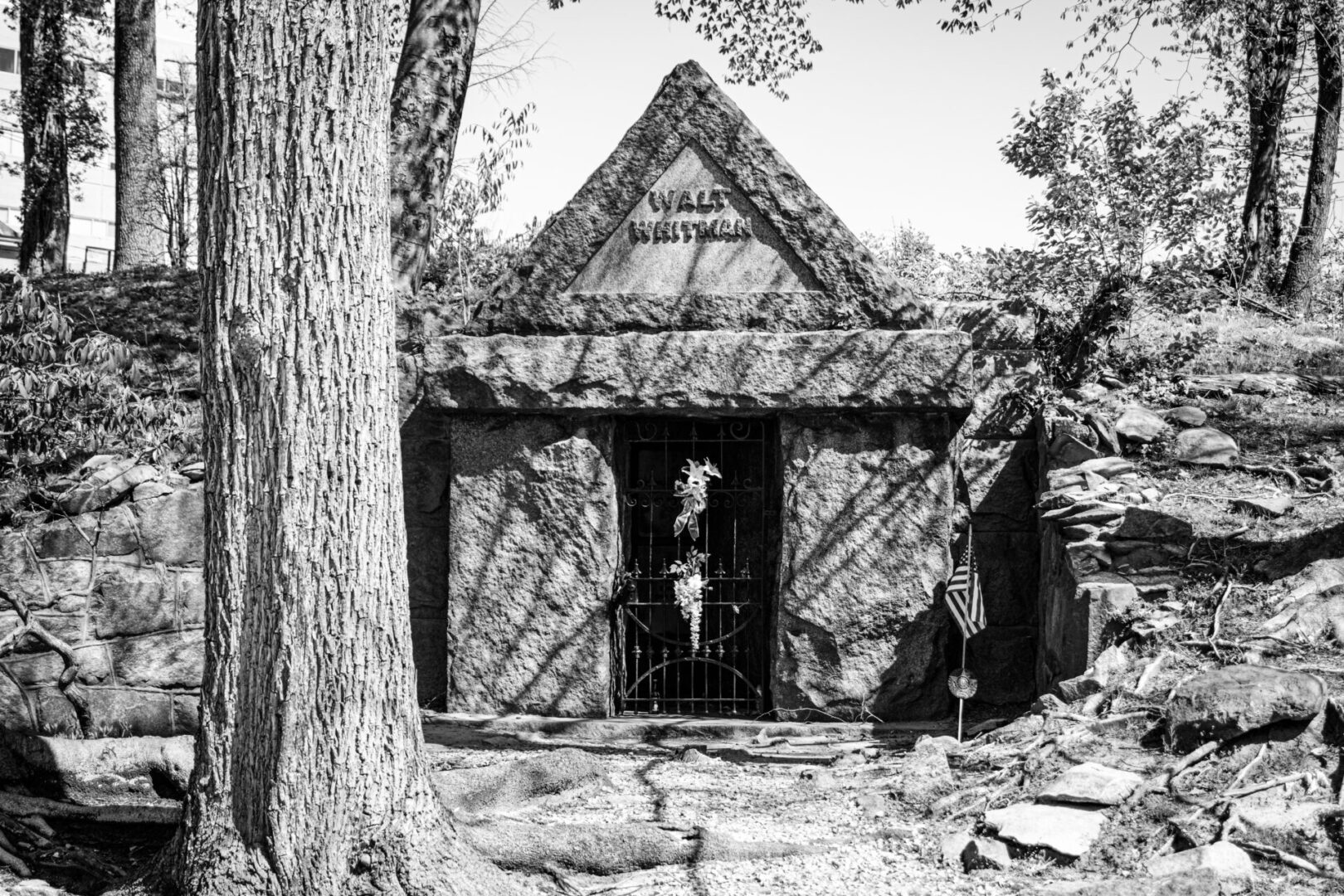
Stanford and Tom
In early 1941, the photographer Edward Weston was commissioned to provide photographs for a reissue of Leaves of Grass by Walt Whitman. Whitman’s original was published in 1855, by the poet himself. It was scandalous. (More about the poem itself in another post). Undeterred, Whitman would add poems and reissue through the course of his life. Leaves of Grass is most often understood as an homage to idea of America. It reads to me like the poetic journal of a lifelong roadtrip. What a great idea to send one of the greatest photographers of the 20th century on an American roadtrip of his own. Weston made it clear that he had no intention of illustrating the text. He would capture what he saw.
The Weston reissue fascinated me. It exists at the intersection of three of my interests … poetry, black and white photography, and, naturally, roadtrips. Weston spent most of 1941 taking pictures throughout the US, and then a year developing and printing them in his home darkroom. The book was published in 1942, in two volumes, packaged in a slipcase. Only 1500 copies were printed, all signed by Weston. A few months ago I purchased a single volume reissue of the reissue. It’s fine, but I coveted the original.
Every April, one of the great antiquarian book shows rolls into New York’s Park Avenue Armory. Many of the best dealers from around the world gather for this event. While there are generalists, most specialize in one genre or another. Generalists or otherwise, generally speaking, prices are nuts. I was on the hunt for Whitman and Weston, so I sought out dealers in books of Photography. I wandered into one booth and asked if they had a copy. No … but they had seen one and they graciously pointed me in the right direction. And there it was. The dealer had recently bought an entire collection of photography books, W&W among the lot, in excellent condition. Number 1386, in the original slipcase. After a lovely chat with the more gregarious of the two owners, it went home with me.
Now Walt Whitman spent the last years of his life in Camden, NJ. He is buried in Camden’s Harleigh cemetery, about a mile from my childhood home. My Mom is buried there, along with a lot of members of my extended family. I knew he was buried in a large mausoleum, there are many pictures. Thinking about this post, and more on the poem itself, I decided a picture of my own would be the perfect header. Packed the camera and the dog in the Jeep, and off to Camden.
And here is why you get out of the house, go on the road. As I pulled up to the gravesite, there were two men by the gated entrance to the tomb, peering in. As I was getting my camera stuff together, they came my way. After a little chit chat about the oddity of seeking a particular grave on the same day, they said they were on a kind of pilgrimage. They were poets, Stanford and Tom, and fascinating. Both wrote in Haiku. While Whitman was certainly a hero, they were there to visit the grave of another poet, Nick Virgilio, the American master of Haiku. They told me that a photo of Nick Virgilio, peering into the gate of Whitman’s tomb, is the cover image of his collected poems.
Stanford and Tom wandered off to the Virgilio grave site and I joined them after I took a few pictures. They explained that Virgilio was responsible for popularizing Haiku in the United States, and that his poetry was admired by the Emperor of Japan. His most famous poem, The Lily, was engraved on the podium that marked his grave. He was also a Catholic, and he was buried next to a priest, a poet himself, that he visited every morning. Another intersection for me. I told them that the next town had a lot of nice places for lunch, and we parted.
Get out and do something. Something entirely free. Talk to the people you meet. Learn the things they know and you don’t. Find the intersections. The Virgilio book is out of print … but I found a copy. This is why the house is full of books.